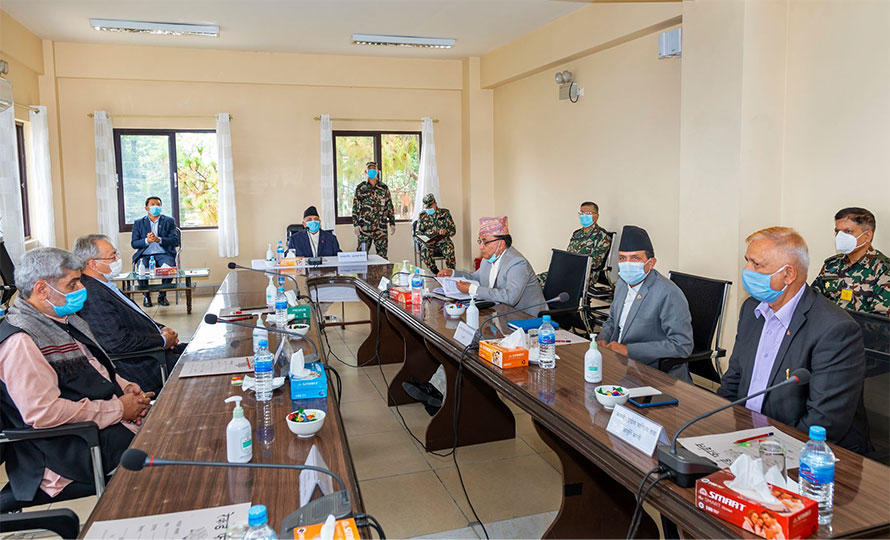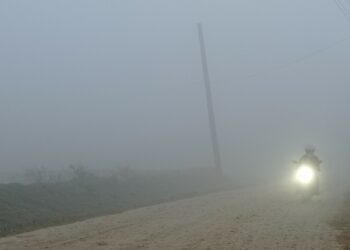KATHMANDU: The Bouddhanath area of Kathmandu was a site to see as shopkeepers were opening the shutters and the police were after them pulling their shutters down asking them to abide by the ‘lockdown’ regulations.
There was the repetition of the Bouddhanath scene in Maitidevi area, early in the morning the shopkeepers were lifting the shutters while Maitidevi police were pulling them down instantly.
Meanwhile, several shops were open on Thursday in Kathmandu’s New Road area.
With lockdown passing over 12 weeks, despite the growing number of new cases of coronavirus infection, the public seems impatient for normal movement in the valley as well.
Keeping this in view, the government is mulling over various modality of reopening lockdown despite warning from the health experts about the risk of further spread of the pandemic.
CCMC plans to reopen in 12 weeks
The government is busy working on relaxing and reopening modality these days and is said to have prepared to reopen in 6 phases.
The strategy prepared by COVID-19 Crisis Management Center, after the thorough study of the 10-week-long lockdown, has planned to open all sectors in 12 weeks.
Concerned at the alarming increase in the coronavirus and also the downturn economy, the CCMC has reached this conclusion.
For this, the government has made the plan to ensure that at least 250 thousand PCR and RDT tests are carried per month.
The government has also made the plan to bring the Nepalis stranded abroad.
The CCMC has already initiated the stranded Nepali facilitation action plan from Tuesday.
CCMC has cited Georgia as a worth impressive model in this regard and has decided to act flexibility on the lockdown opening program evaluating impact in every two weeks. The center has consulted all ministries, four security forces and experts and will collect their feedback in the review of each phase.
Agriculture is in the priority of reopening when the entertainment, sports, and educational institutions are in the last phase of reopening. In 12 weeks all sectors will be reopened.
According to NA sources, together with the change of lockdown modality, there will be some changes in the existing modalities of the quarantine, tests, and isolation management.
“Together with the change in lockdown modality, different modalities on the management of quarantine, isolation, and test pressure will be introduced,” Brigadier General Bigyan Dev Pandey, the spokesperson of Nepal Army stated.
He said that the homework was also focused on intensifying the COVID-19 tests.
Six phases of reopening
Provided the CCMC’s plan comes into effect, in the first phase i.e. in the first two weeks of agriculture, small industries, groceries, retail shops, and other small enterprises will reopen partially. However, all transactions carried out via the internet will be opened full-fledged.
After the review of two weeks’ opening, agriculture will be opened fully. In the meantime, financial institutions will be reopened partially.
According to the plan, public and private vehicles will still be closed until the third phase. The newspapers will be closed and online media will be given priority until this phase.
As per the proposal, the industry, financial institution and other agencies which were opened earlier will go for full fledge operation during the fourth phase.
In the fifth phase, all institution and organization which don’t have a large crowd of people, the market and the transportation sector will be in operation. After the two weeks review of this phase, the country will go for the last or the sixth phase reopening.
As per the CCMC plan, the health service, supply, security, and information management activities will be executed by the concerned ministries.
The use of masks and social distancing in public places will be mandatory throughout the reopening.
Tests, quarantine and isolation management: 250 thousand tests will be held in a month
The CCMC has submitted the details about the preparation measures during the reopening phase.
CCMC has estimated that there will be at least 500 people seeking isolation service, so it has recommended the High-Level Committee to ensure the availability of isolation for 500 people, 16 different types of health materials, 70 different medicine and 103 different types of test materials.
CCMC has projected that there will be a demand of 264 thousand PCR Agent and RNA Extract, 145 thousand VTM, and RDT 121 thousand per month. With these materials, 130 thousand PCR tests and 120 thousand RDT tests can be carried out in a month.
CCMC source says that there are 211 thousand PPEE, 210 thousand N 95 masks, 34 thousand RDT kits and 21 thousand VTM health materials.
Among the 342 tons of health materials brought by the Nepal Army, 28322 PCR test kits are in stock to date.
In addition to this, the government will make holding centers in the borders and 6 quarantine centers in various places in Kathmandu valley.









Comment